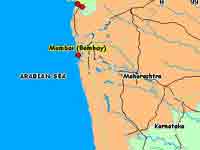AHWR undergoes design changes to increase safety, security

Scientists at the Bhabha Atomic Research Centre (BARC) have worked out a new fissile fuel combination for AHWR involving 20 per cent low enriched uranium (LEU)-thorium fuel instead of plutonium-thorium as planned earlier.
This change will again delay the setting up of this technology demonstration plant, some scientists said while others say this will be pursued in parallel and should be of considerable interest to international community, particularly in the wake of Japan's Fukushima accident.
The original plans conceived and made for the newly designed AHWR by former chairman Anil Kakodkar was to use plutonium-thorium combination to convert thorium to uranium-233 and had been even reviewed by the Atomic Energy Regulatory Board (AERB).
"The new system is important for India as a part of domestic program to expand our experience with thorium and uranium-233. Always some fissile feed in the form of plutonium would be required," Kakodkar told PTI.
"The change in fuel arrangement was conceived recently with the aim of international deployment of safe and secure nuclear power system with all its advanced safety features and deliberately kept low power density," he said.
"Also the risk of proliferation is significantly reduced since the recycled uranium will be highly proliferation resistant as it would contain U-232," Kakodkar said.
"Besides, the plutonium in the spent fuel would be low both in quantity and fissile content with larger concentration of heat generating plutonium 238 leading to enhanced proliferation resistance and reduced risk of diversion to weapons," he added.
From safety, security and non-proliferation resistance angle, this new version of AHWR will be good, Kakodkar said.
Internationally, there is thus a possibility of having a safe system that would at the same time minimise the risk of proliferation, he said adding that there should be a large deployment of AHWRs.
Confirming the change in design, Director BARC Dr R K Sinha said, "We will be using 20 per cent low enriched uranium (safeguarded or imported) and 80 per cent of thorium for the conversion to U233 as planned for India's third stage programme of thorium utilisation."
It has been shown that the physics performance would allow as high as 60,000 MW day per tonne burn up of the fuel, Sinha said.
During reprocessing, some uranium, plutonium and uranium-233 will have to be separated. Thorium oxide which is needed for the third stage programme can be separated and stored for a long time before use, Sinha said.
"In fact, the leaching of thorium oxide in water is negligible," he said.
Asked when can the ground breaking ceremony for construction of AHWR be expected, he said within 18-24 months.
The site selection committee has already submitted its choice of the site and government has to just announce it, he added.
On whether the name heavy water will continue since enriched uranium is being used, Sinha said, heavy water will be used as a moderator. The passive cooling system is the most attractive part of the reactor, he said.
PTI


 Click it and Unblock the Notifications
Click it and Unblock the Notifications


































